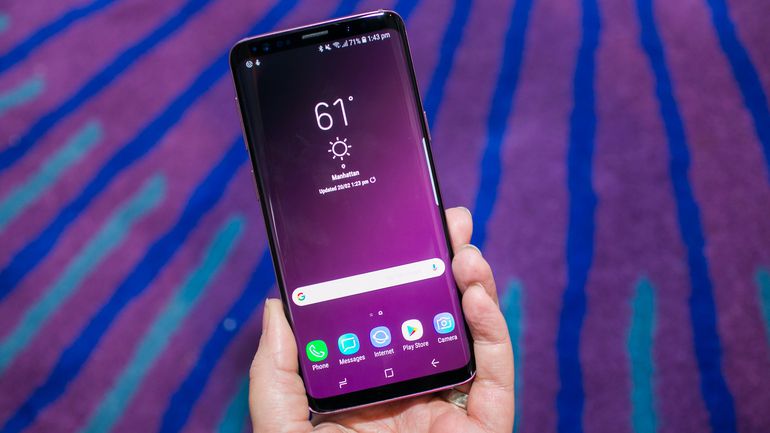We all remember that commercial from a few years ago when rapper Lil Wayne poured champagne on his Samsung phone. That wasn’t the first waterproof cell phone, but it was the first that didn’t look like it belonged on a construction site. Here it is in case you needed your memory jogged:
Since then, we’ve all gotten comfortable with the idea that phones could be waterproof, at least a little. It’s a good thing too because early smartphones were nowhere near waterproof and a little bit of rain killed a lot of them. But as we soon learned, not all things are as waterproof as other things. That’s where IP rating comes in.
What IP rating is
IP rating, or Ingress Protection rating, is a measure of how hard it is for something to get in. It’s not just water, it could be air or dust or smoke or a banana. IP rating turns out to be a very flexible thing. In general higher numbers are better. For example:
- Samsung’s Galaxy S9 is rated IP68.
- Apple’s iPhone XS is also rated IP68.
However, Apples iPhone X is only rated IP67, which means it’s not as waterproof as either of today’s two flagship phones. How do I know that? Well, 8 is bigger than 7, so iPhone XS is more waterproof than iPhone X.
If only it were as easy as that.
The first number is actually the dust protection level. Dust is a bad thing to get into phones and considering you probably put your phone in your pocket all the time, it’s good that it’s a pretty high number. Here’s what the first number means:
| Level sized | Effective against | Description |
|---|---|---|
| X | — | X means there is no data available to specify a protection rating with regard to one of the criteria. |
| 0 | — | No protection against contact and ingress of objects |
| 1 | >50 mm | Any large surface of the body, such as the back of a hand, but no protection against deliberate contact with a body part |
| 2 | >12.5 mm | Fingers or similar objects |
| 3 | >2.5 mm | Tools, thick wires, etc. |
| 4 | >1 mm | Most wires, slender screws, large ants etc. |
| 5 | Dust protected | Ingress of dust is not entirely prevented, but it must not enter in sufficient quantity to interfere with the satisfactory operation of the equipment. |
| 6 | Dust tight | No ingress of dust; complete protection against contact (dust tight). A vacuum must be applied. Test duration of up to 8 hours based on air flow. |
As you can see 6 is the highest level of protection so you can feel good that the phone you have isn’t going to get dusty inside just because it’s dusty on the outside.
The second number is actually the waterproofness of the phone. It’s a little more complex because you can’t say a phone is completely waterproof. I mean, you could take it down to a depth of 500 feet and it wouldn’t be waterproof at all. Here’s what the second number means:
| Level | Protection against | Effective against | Details |
|---|---|---|---|
| 0 | None | — | — |
| 1 | Dripping water | Dripping water (vertically falling drops) shall have no harmful effect on the specimen when mounted in an upright position onto a turntable and rotated at 1 RPM. | Test duration: 10 minutes Water equivalent to 1 mm rainfall per minute |
| 2 | Dripping water when tilted at 15° | Vertically dripping water shall have no harmful effect when the enclosure is tilted at an angle of 15° from its normal position. A total of four positions are tested within two axes. | Test duration: 2.5 minutes for every direction of tilt (10 minutes total) Water equivalent to 3 mm rainfall per minute |
| 3 | Spraying water | Water falling as a spray at any angle up to 60° from the vertical shall have no harmful effect, utilizing either: a) an oscillating fixture, or b) A spray nozzle with a counterbalanced shield.Test a) is conducted for 5 minutes, then repeated with the specimen rotated horizontally by 90° for the second 5-minute test. Test b) is conducted (with shield in place) for 5 minutes minimum. | For a Spray Nozzle:Test duration: 1 minute per square meter for at least 5 minutes[4] Water volume: 10 litres per minute Pressure: 50–150 kPaFor an oscillating tube: Test duration: 10 minutes Water Volume: 0.07 l/min per hole |
| 4 | Splashing of water | Water splashing against the enclosure from any direction shall have no harmful effect, utilizing either: a) an oscillating fixture, or b) A spray nozzle with no shield.Test a) is conducted for 10 minutes. Test b) is conducted (without shield) for 5 minutes minimum. | Oscillating tube: Test duration: 10 minutes, or spray nozzle (same as IPX3 spray nozzle with the shield removed) |
| 5 | Water jets | Water projected by a nozzle (6.3 mm) against enclosure from any direction shall have no harmful effects. | Test duration: 1 minute per square meter for at least 15 minutes Water volume: 12.5 litres per minute Pressure: 30 kPa at distance of 3 m |
| 6 | Powerful water jets | Water projected in powerful jets (12.5 mm nozzle) against the enclosure from any direction shall have no harmful effects. | Test duration: 1 minute per square meter for at least 3 minutes Water volume: 100 litres per minute Pressure: 100 kPa at distance of 3 m |
| 6K | Powerful water jets with increased pressure | Water projected in powerful jets (6.3 mm nozzle) against the enclosure from any direction, under elevated pressure, shall have no harmful effects. Found in DIN 40050, and not IEC 60529. | Test duration: at least 3 minutes[citation needed] Water volume: 75 litres per minute Pressure: 1000 kPa at distance of 3 m |
| 7 | Immersion, up to 1 m depth | Ingress of water in harmful quantity shall not be possible when the enclosure is immersed in water under defined conditions of pressure and time (up to 1 m of submersion). | Test duration: 30 minutes – ref IEC 60529, table 8. Tested with the lowest point of the enclosure 1000 mm below the surface of the water, or the highest point 150 mm below the surface, whichever is deeper. |
| 8 | Immersion, 1 m or more depth | The equipment is suitable for continuous immersion in water under conditions which shall be specified by the manufacturer. However, with certain types of equipment, it can mean that water can enter but only in such a manner that it produces no harmful effects. The test depth and duration is expected to be greater than the requirements for IPx7, and other environmental effects may be added, such as temperature cycling before immersion. | Test duration: Agreement with ManufacturerDepth specified by manufacturer, generally up to 3 m |
| 9K | Powerful high temperature water jets | Protected against close-range high pressure, high temperature spray downs.Smaller specimens rotate slowly on a turntable, from 4 specific angles. Larger specimens are mounted upright, no turntable required, and are tested freehand for at least 3 minutes at distance of 0.15–0.2 m.
There are specific requirements for the nozzle used for the testing. This test is identified as IPx9 in IEC 60529. |
Test duration: 30 seconds in each of 4 angles (2 minutes total)Water volume: 14–16 litres per minute Pressure: 8–10 MPa (80–100 bar) at distance of 0.10–0.15 m Water temperature: 80 °C |
So IP68 really means that the phone is completely dustproof and it’s fine if you drop it in 10 feet of water. Realistically this is going to protect you for almost anything you do, other than dropping it at the bottom of a pool. Actually since there’s such a big gap between 8 and 9, you could probably drop it in a pool and it would be fine. They just don’t promise it.
The road to IP69K
IP69K means, the phone would be as resistant as possible to dust or water. However, it would be pretty darn hard to do that with a phone. It’s hard enough to make a phone waterproof with all the microphones and speakers and charging connectors. I have to imagine that it would be very hard to make a phone without that stuff, and that’s what it would take.





